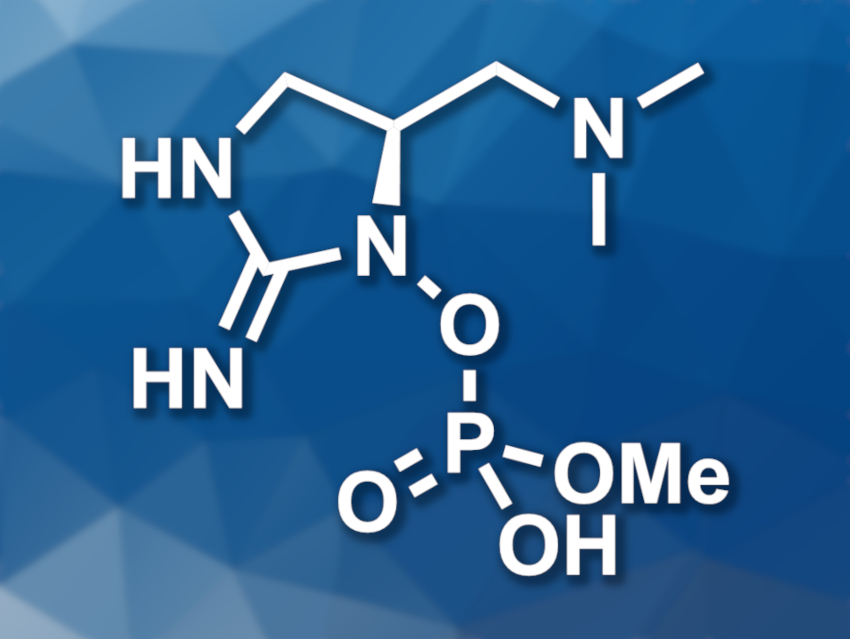Algal or cyanobacterial blooms in freshwater bodies can be a serious threat to public health because these organisms often produce toxic compounds. The chemical structures of cyanobacteria toxins are highly diverse, which makes their detection and quantification via chemical analysis challenging.
An alternative approach is the detection of cyanobacterial genes responsible for toxin biosynthesis via polymerase chain reaction (PCR) tests. Such genes have been identified and successfully used for monitoring some common cyanotoxins like saxitoxin. So far, this method of detection has not been available for guanitoxin (pictured), a dangerous cyanotoxin. Guanitoxin is the only known natural organophosphate neurotoxin.
Shaun M. K. McKinnie, University of California, Santa Cruz, USA, Marli F. Fiore, University of São Paulo, Brazil, Bradley S. Moore, University of California, San Diego, USA, and colleagues have identified and characterized the guanitoxin biosynthesis gene cluster (BGC) in the cyanobacterium Sphaerospermopsis torques-reginae ITEP-024, which was found in a cyanobacterial bloom in Brazil. The group sequenced the genome of the cyanobacterial strain and identified likely intermediates of guanitoxin biosynthesis starting from the common amino acid arginine.
The team found a potential BGC and validated the synthetic pathway using chemically synthesized intermediates. Guanitoxin was formed from arginine in a nine-step biosynthetic pathway requiring the enzymes encoded by the BGC.
Subsequently, the researchers looked into environmental sequencing data to find out how common the ability to synthesize guanitoxin is. They discovered it in cyanobacterial strains all over the world, spanning a wide range of different climatic conditions. Knowing the genetic signature of this toxin could allow improved monitoring of its occurrence and, therefore, better protection from its harmful effects.
- Biosynthesis of Guanitoxin Enables Global Environmental Detection in Freshwater Cyanobacteria,
Stella T. Lima, Timothy R. Fallon, Jennifer L. Cordoza, Jonathan R. Chekan, Endrews Delbaje, Austin R. Hopiavuori, Danillo O. Alvarenga, Steffaney M. Wood, Hanna Luhavaya, Jackson T. Baumgartner, Felipe A. Dörr, Augusto Etchegaray, Ernani Pinto, Shaun M. K. McKinnie, Marli F. Fiore, Bradley S. Moore,
J. Am. Chem. Soc. 2022.
https://doi.org/10.1021/jacs.2c01424




